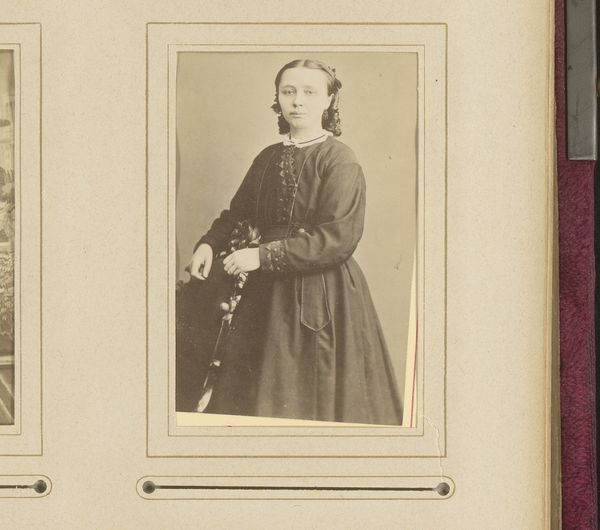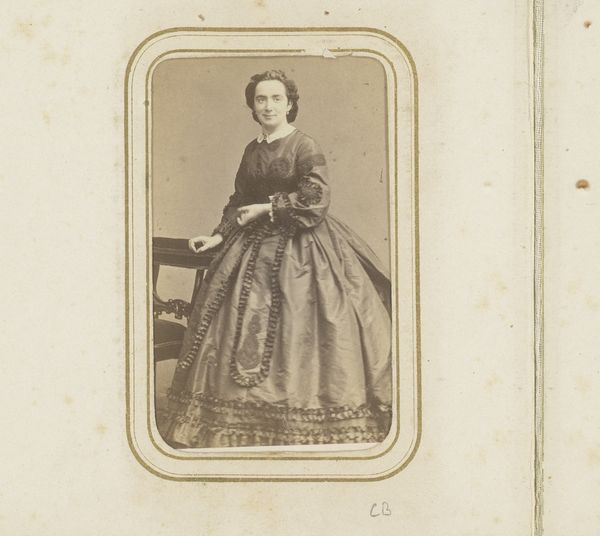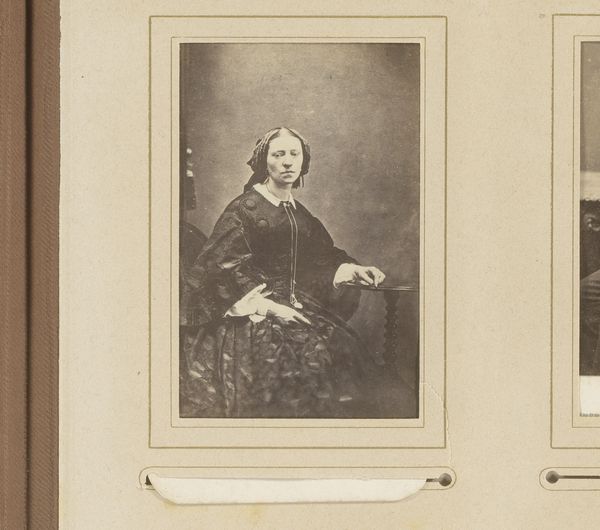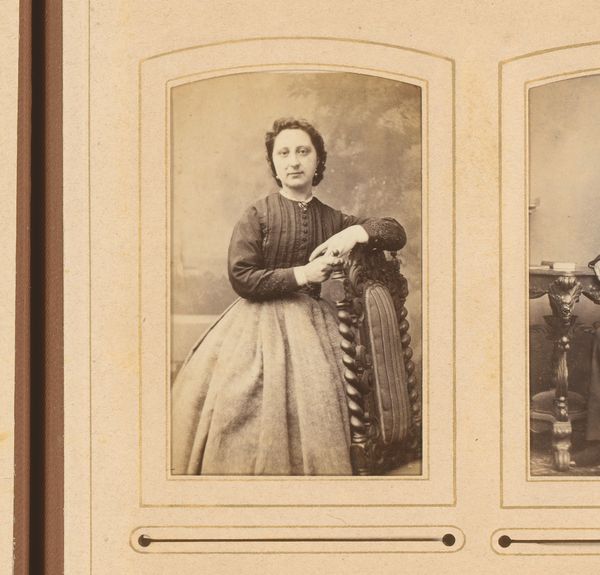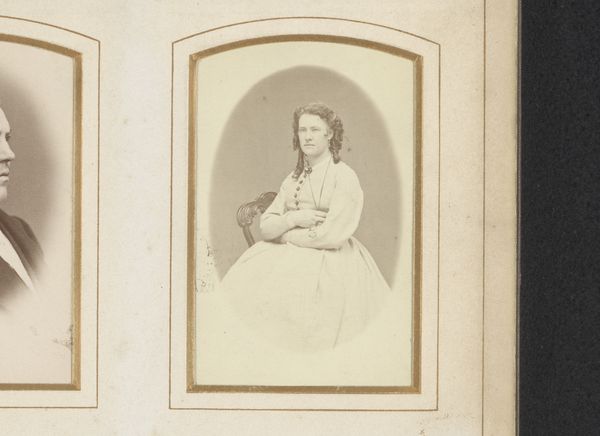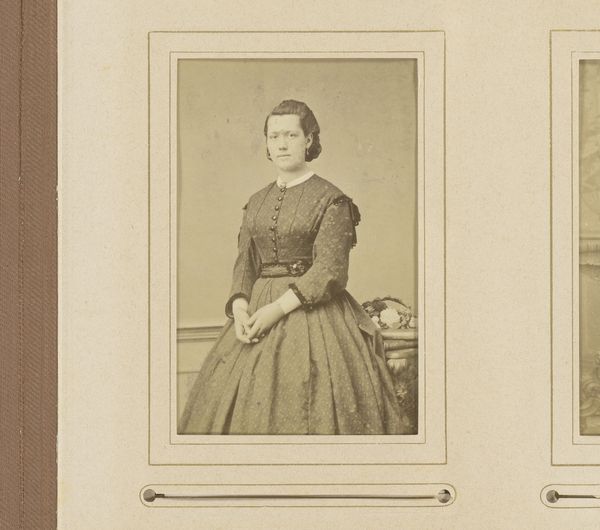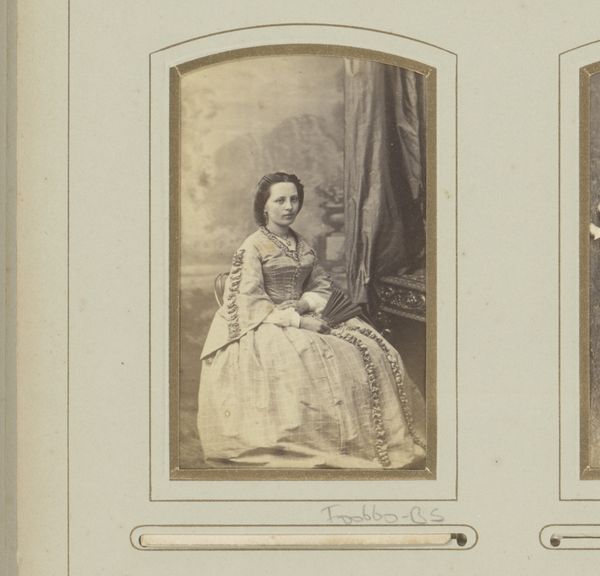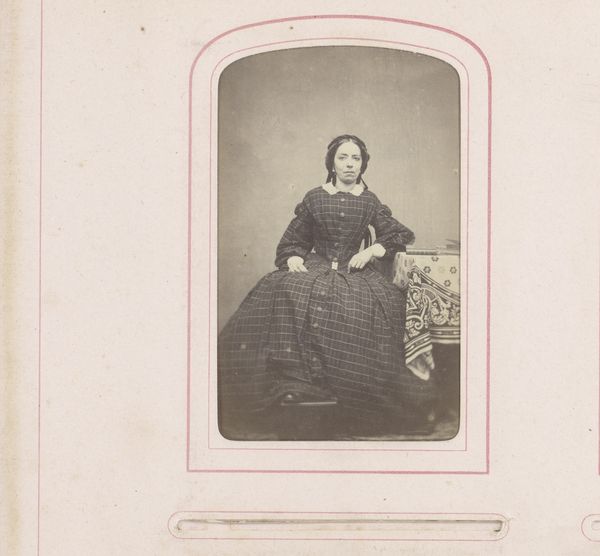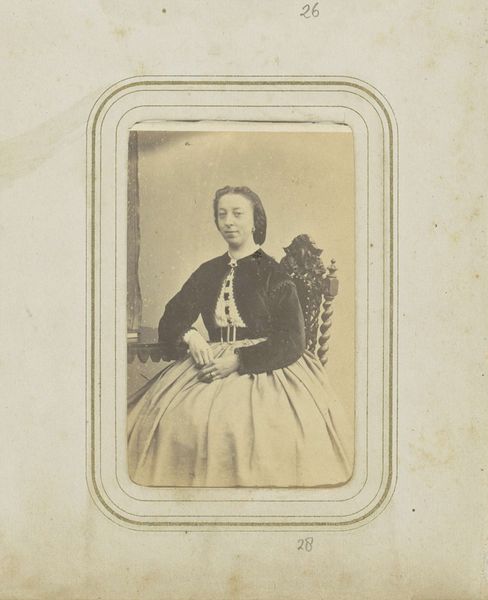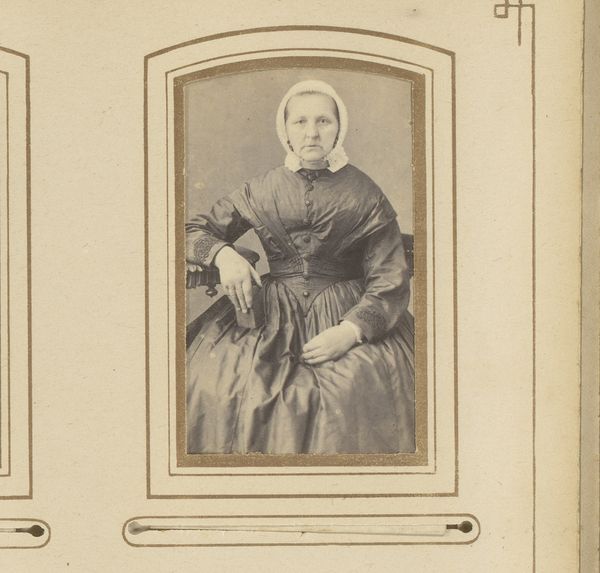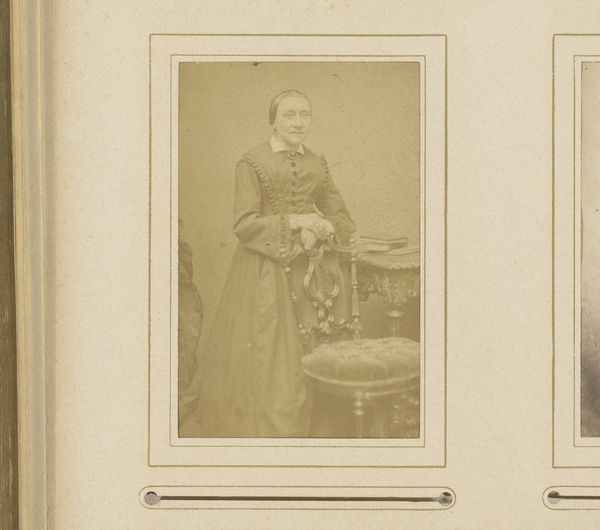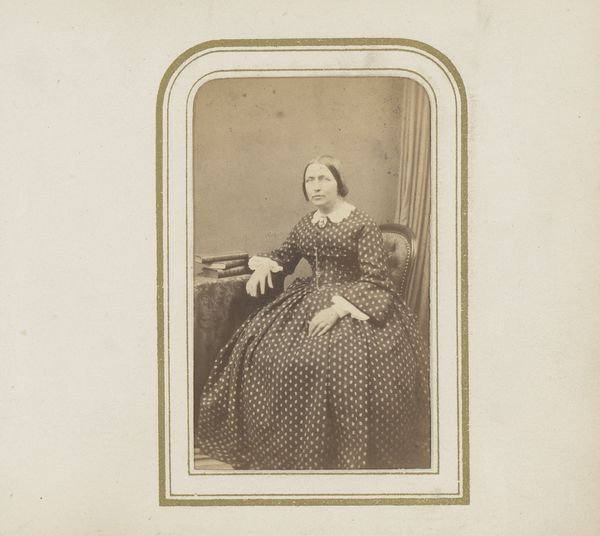
Portret van een vrouw met pijpenkrullen bij een tafel met reukwaterfles 1867 - 1875
0:00
0:00
photography
#
portrait
#
photography
#
19th century
#
realism
Dimensions: height 81 mm, width 52 mm
Copyright: Rijks Museum: Open Domain
This is a photograph by Emanuel Lorjé, a portrait of a woman with curled hair beside a table with a perfume bottle. Photography in the mid-19th century was a complex process, requiring specialized knowledge, equipment, and materials. The collodion process used to make this image involved coating a glass plate with a light-sensitive chemical emulsion, exposing it in a large format camera, and then developing the image immediately. The resulting photograph has a distinctive tonal range and clarity, capturing the sitter's features and the details of her clothing and surroundings with remarkable precision. The material reality of the photograph itself—the glass plate, the chemical emulsion, the light that exposed the image—are all part of the artwork's meaning. Photographs like this one reflect the rise of industrial capitalism and mass production. Photography democratized image-making, making portraits accessible to a wider range of people. In doing so, it challenged traditional hierarchies of art and skill. By focusing on the materials and processes of photography, we can better understand its cultural and social significance, and its place in the broader history of art.
Comments
No comments
Be the first to comment and join the conversation on the ultimate creative platform.

